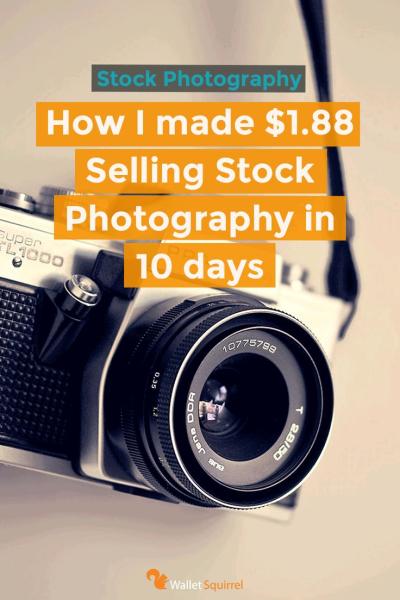Ever wondered how Shutterstock decides the price of a single photo? If you’re a photographer or just a curious buyer, understanding their pricing system can be eye-opening. Shutterstock is one of the biggest stock photo platforms out there, offering millions of images to users worldwide. Their pricing model is designed to be flexible, catering to different needs—from casual bloggers to big corporations. Instead of a one-size-fits-all approach,
Factors Influencing Shutterstock Photo Pricing
Several key factors come into play when Shutterstock sets the price for a photo. First, the type of license matters a lot. Shutterstock offers Standard and Enhanced licenses, with the latter allowing for broader usage rights, which naturally costs more. The resolution and size of the image also influence the price—higher-resolution images suitable for large prints are priced higher than smaller versions. Another big factor is the contribution status of the photographer; exclusive contributors might enjoy different pricing structures compared to non-exclusive ones.
But it’s not just technical specs and contributor status—market demand plays a huge role. Photos that are trending or in high demand tend to command higher prices, especially if they fill a niche that’s hard to find elsewhere. Shutterstock also considers the intended use—commercial campaigns, advertising, and product packaging typically require licenses that cost more than personal or editorial use.
Finally, the pricing model itself is designed to encourage more downloads through bulk purchasing options like subscriptions and image packs. These packages offer discounts for users who need multiple images, which benefits both the buyer and Shutterstock. Overall, the pricing reflects a balance of technical factors, contributor contributions, market trends, and licensing options—making it a dynamic system that adapts to the needs of everyone involved.
Different Licensing Options and Their Costs
When you’re browsing Shutterstock, you’ll notice that photos are offered under various licensing options. Understanding these options is key to grasping how pricing works and why a photo might cost a certain amount. Essentially, Shutterstock provides two main types of licenses: Standard and Enhanced. Each comes with its own set of rights, uses, and costs, which can influence how much you pay for a particular image.
Standard License is the most common choice for most users. It’s suitable for online use, social media, blogs, presentations, and small print runs (up to 500,000 copies). Prices for standard licenses are generally lower because they come with fewer restrictions. For example, if you’re creating a social media campaign or a blog post, a standard license will usually suffice.
Enhanced License, on the other hand, is designed for more extensive use cases. If you plan to print a large poster, billboard, or distribute your image widely in commercial products, an enhanced license is the way to go. It allows for larger print runs, merchandise, and other high-volume uses. Naturally, this license costs more because it grants broader rights and higher usage limits.
| License Type | Use Case | Cost Range (approximate) |
|---|---|---|
| Standard | Web, social media, small print runs | $10 – $50 |
| Enhanced | Large prints, merchandise, high-volume distribution | $80 – $500+ |
- Subscription Plans: Shutterstock offers subscription plans that allow you to download a set number of images per month at a discounted rate. These plans are ideal for frequent users who need images on a regular basis. The cost per image decreases as you commit to higher monthly download limits.
- On-Demand Purchases: If you need just a few images, you can purchase downloads individually, paying the license fee upfront. This is flexible but might be more expensive per image compared to subscriptions.
It’s worth noting that prices can vary based on factors like image resolution, exclusivity, and whether you’re a new or returning customer. But regardless of the licensing option you choose, always ensure it aligns with your intended use to avoid licensing issues down the line.
How Shutterstock’s Revenue Sharing Affects Photographer Earnings
Ever wondered how photographers earn money on Shutterstock? It’s a mix of licensing fees paid by users and the revenue sharing model that Shutterstock employs. This system directly impacts how much a photographer makes from each download of their images.
Shutterstock operates on a tiered royalty system, meaning the more downloads a photographer has and the longer they stay active on the platform, the higher their earning percentage becomes. Here’s a quick breakdown:
- New Contributors: Typically start earning around 15-20% of the license price per download.
- Established Contributors: After hitting certain download milestones, their earnings can increase to 30-40%.
- Top Earners: The most prolific and popular photographers can earn up to 50% or more, depending on their exclusivity status and sales volume.
What’s interesting is that Shutterstock also offers a revenue-sharing model for exclusive contributors. If you choose to license your images exclusively through Shutterstock, you might earn a higher percentage per download. This incentivizes photographers to keep their best work on the platform exclusively, which can boost their earnings over time.
Here’s a simple example to illustrate how this works:
| Scenario | Royalty Rate | Example Calculation |
|---|---|---|
| New Contributor, Non-exclusive | 15% | Image license costs $50 → $7.50 earned |
| Established Contributor, Exclusive | 50% | Image license costs $50 → $25 earned |
Plus, Shutterstock’s global reach means that your images can be downloaded worldwide, increasing potential earnings. They also run promotional campaigns and seasonal sales, which can temporarily boost licensing prices and, consequently, your earnings.
It’s a win-win situation: Shutterstock benefits from having a vast library of images, and photographers get a chance to earn steadily, especially as their portfolio grows and their images become popular. So, understanding this revenue sharing structure helps photographers strategize which images to upload, whether to go exclusive, and how to price their work effectively.
Tips for Photographers to Optimize Pricing and Sales
Getting the most out of your photography on Shutterstock involves more than just snapping great shots. It’s about understanding how to price your images effectively to attract buyers while ensuring you’re fairly compensated. Here are some practical tips to help you optimize your pricing strategy and boost your sales:
Know Your Audience and Market
Before setting your prices, consider who your target audience is. Are you aiming for commercial clients, bloggers, or media outlets? Different markets have varying budgets, so research what similar photographers are charging. This helps you set competitive yet profitable prices.
Focus on Quality and Uniqueness
High-quality, original images tend to command higher prices. Invest time in capturing unique perspectives or niche subjects that aren’t widely available. When your photos stand out, buyers are more willing to pay a premium.
Start with Competitive but Fair Pricing
It’s tempting to price your work very high, but new contributors should balance competitiveness with fair compensation. Consider offering introductory prices or discounts to attract initial buyers and build your portfolio.
Leverage Shutterstock’s Pricing Tools and Options
Shutterstock offers different licensing options and pricing tiers. Familiarize yourself with these to maximize your earnings. For example, offering exclusive images might fetch higher prices, but ensure it aligns with your goals and availability.
Use Descriptive, Keyword-Rich Titles and Tags
Optimization isn’t just about price—it’s also about visibility. Well-optimized keywords and titles help your images show up in relevant searches, increasing the likelihood of sales. The more your images are seen, the more potential for higher earnings.
Regularly Review and Adjust Prices
Market trends change, and so should your pricing. Keep an eye on which images sell well and adjust prices accordingly. Don’t be afraid to experiment with higher or lower pricing to find the sweet spot.
Build a Consistent Portfolio
Consistent quality and a cohesive style can help establish your brand as a photographer. Buyers often return to trusted contributors, so maintaining a steady stream of high-quality images can lead to more sales over time.
Conclusion and Final Thoughts on Shutterstock Photo Pricing
Understanding how Shutterstock sets photo prices is key to making your photography career sustainable and profitable. Prices are influenced by various factors, including image quality, licensing options, the contributor’s reputation, and market demand. As a photographer, your goal should be to strike a balance between fair compensation and competitive pricing to attract buyers effectively.
Remember, pricing isn’t a one-time decision. It requires ongoing attention, market research, and a willingness to adapt. By focusing on quality, optimizing your images for search, and staying informed about market trends, you can enhance your earning potential on Shutterstock. Keep experimenting, learning, and honing your craft—your efforts will pay off in both sales and personal fulfillment.


